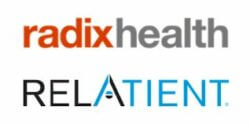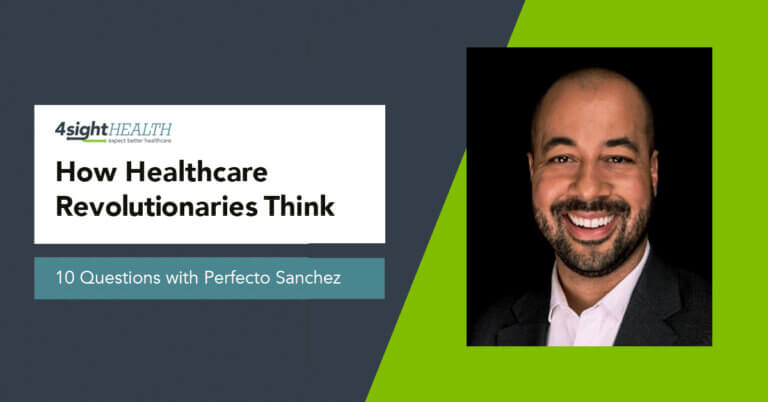January 25, 2022

All Roads Lead to Value (Part 4): Building The Last Mile to the Patient
Author Note: This is the final of four articles on the transition to value-based care models for providers. Risk-based (also known as value-based) payment models, pro-market regulations, new competitors, technology advances and rising consumerism are combining to place enormous pressure on the healthcare industry to deliver better outcomes at lower costs with better customer experience. This article looks at the technologies and strategies that provider organizations increasingly rely on to connect with patients and improve access, communication, convenience, and administrative performance. Click to read Part 1, Part 2, Part 3, Part 4.
On healthcare’s long road to value, the last mile to connect service providers with patients is the most torturous. It requires healthcare to engage with patients in their own care by:
- Supporting patients in adhering to their treatment plans and medications.
- Tracking patients’ care and monitoring their health status.
- Focusing on patients’ individual wellbeing as well as their treatment needs.
This level of engagement requires continuous, user-friendly connection between patients and clinicians.
Healthcare organizations have long begun to deploy basic technologies that enable such connection. The COVID-19 pandemic has helped accelerate associated tech adoption and drive further digital innovation. Under pressure to expand care access, CMS issued regulatory waivers and new rules to enable easier digital connections with patients. [1]
In response, healthcare organizations expanded their use of telemedicine services (ranging from smartphones and Zoom to sophisticated virtual care platforms), data exchange, monitoring devices, bilateral texting and digital payment tools.
Despite the pandemic “push,” healthcare’s consumer-facing technologies remain relatively rudimentary. Let’s call the current state “consumerism 1.0.” These solutions have established the core pathways and infrastructure necessary for engaging consumers across multiple channels with ease, simplicity, immediacy and convenience to facilitate care delivery, information flow and payment while improving quality and experience.
Having relied on basic digital technologies during the pandemic, patients and clinicians don’t want a return to the nonautomated processes that have frustrated them for years. Healthcare organizations and investors recognize this shift in user sentiment and are racing to make their digital offerings more expansive, more available and easier to use.
In 2019, digital healthcare technology firms received $7.98B in investment capital, almost $2B less than 2018. In 2020, the first year of the pandemic, investment soared to a record level of nearly $15 billion. 2021 surpassed those heights by Q3 with $21B [2] in funding, a sign that stakeholders expect digital care modalities to become permanent components of a decentralized healthcare marketplace that enables easier and better care access. There is no going back.
This wave of consumerism 1.0 technologies is building digital health solutions that do the following:
- Make a meaningful difference in administrative efficiency and health outcomes.
- Harmonize connection between point solutions within core EHR systems and multichannel platforms.
- Establish more robust and comprehensive patient relationship management capabilities.
The future of healthcare will be “omni-channel” — a world in which healthcare consumers engage with their care teams (and ancillary services providers) seamlessly across every channel, whether virtual, digital or in-person, with consistent experience, reliable information flow and comprehensive data capture and access.
This article highlights four companies at the forefront of this trend. They offer promising tools for today that will also help enable the next generation of omni-channel solutions.
Facilitating Patient Access and Service
Over the past 50 years, complex payment systems, regulatory rules and bureaucratic red tape have widely hampered digital innovation and consumerism within healthcare. In the process, the healthcare system has created significant barriers to patient / provider communication and connection.
 With the HITECH Act of 2009, policy makers introduced legislation that prompted broader use of EMR systems and data sharing among providers. Additional legislation and regulations to reward performance – including MACRA (Medicare Access and CHIP Reauthorization Act) and the establishment of the Medicare Quality Payment Program — assisted in facilitating the transition toward value-based care. This incentivized healthcare providers to improve patient communications and contributed to the wave of consumerism 1.0 technologies today.
With the HITECH Act of 2009, policy makers introduced legislation that prompted broader use of EMR systems and data sharing among providers. Additional legislation and regulations to reward performance – including MACRA (Medicare Access and CHIP Reauthorization Act) and the establishment of the Medicare Quality Payment Program — assisted in facilitating the transition toward value-based care. This incentivized healthcare providers to improve patient communications and contributed to the wave of consumerism 1.0 technologies today.
Digital health technologies are core to that strategic imperative. Yet, despite massive investment in the years since, patients and clinicians remain dissatisfied with the tools available to them and the barriers still in place.
A recent McKinsey report on changing healthcare consumer expectations notes that three quarters of consumers say they prefer digital tools but only one quarter report using them.
The McKinsey authors observe:
The COVID-19 pandemic has reset the way many consumers feel about, think about, and interact with their healthcare providers, with more expectations of higher levels of personalization and engagement. Healthcare players across the value chain have an opportunity to engage and support consumers better to ensure that they continue to receive high-quality care. Healthcare companies that live up to that higher bar may not only satisfy their customers and create improved healthcare outcomes but also be best positioned to retain and increase their customer bases as the pandemic ebbs. [3]
Consumers are ready to embrace digital health technologies. The race is on to satisfy their demands. In recognition of these changing market dynamics, innovative health systems and technology vendors are developing better ways to expand and enhance communication capabilities and access. Let’s explore several.
Building Omni-Channel Digital Platforms
Well Health
![]() Founded in 2015, Santa Barbara, California-based WELL Health is a leading digital communication hub focused on elevating the patient experience and improving user adoption by integrating its platform into existing provider technologies. WELL has enabled more than 200,000 providers to facilitate 1 billion messages for 31 million patients annually. [4] WELL’s strategy is to unify and automate disjointed communications across healthcare organizations, reducing clinician burdens and medical errors while improving patient retention. WELL offers healthcare providers a broad multitude of use cases in support of improved patient engagement, ranging from patient outreach and appointment automation, to care management and population health, through patient reviews and payment management.
Founded in 2015, Santa Barbara, California-based WELL Health is a leading digital communication hub focused on elevating the patient experience and improving user adoption by integrating its platform into existing provider technologies. WELL has enabled more than 200,000 providers to facilitate 1 billion messages for 31 million patients annually. [4] WELL’s strategy is to unify and automate disjointed communications across healthcare organizations, reducing clinician burdens and medical errors while improving patient retention. WELL offers healthcare providers a broad multitude of use cases in support of improved patient engagement, ranging from patient outreach and appointment automation, to care management and population health, through patient reviews and payment management.
WELL CEO Guillaume de Zwirek believes healthcare is far behind other consumer-facing industries when it comes to communications. As he notes,
“I don’t think healthcare really understands what true patient engagement is. There is no single common standard. They’re all communicating with patients in different ways. Healthcare is the third-worst industry when it comes to customer service. It should be number one.” [5]
Lead Edge Capital (with participation from Martin Ventures, Jackson Square Ventures, Health Velocity Capital, Summation Health Ventures, Structure Capital, and Freestyle Capital) led WELL Health’s last capital raise. The November 2020 Series C round followed 100% annual cumulative growth since the company’s founding.
Concurrently, WELL announced a partnership with EHR-giant Cerner to improve patient messaging through secure texting, email, telephone and webchat. With COVID raging, Cerner needed to enhance its tech-enabled communication with patients to facilitate testing, vaccinations and care delivery.
Cerner is incorporating WELL’s capabilities into its portals to create a patient communication hub that facilitates notifications, appointment scheduling, treatment reminders and transportation arrangements. This will also help providers using Cerner’s EMR to unify and automate communications involving patient data across multiple systems and applications.
Their combined goal is to improve patient experience, enhance access and convenience, and minimize error. Automated workflows that adapt to patient responses increase timeliness and personalization. Cerner expects their partnership with WELL to improve patient satisfaction, retention and acquisition for their health system clients.
For the record, Oracle has recently announced its intention to acquire Cerner, [6] underscoring big tech’s continued commitment to the healthcare industry and interest in advancing its digitization and data intelligence. Cerner’s broad install base and central software product offering provide Oracle the opportunity to significantly enhance data insights and commercialization to drive outcomes while leveraging its work across the Life Sciences industry, and with its payment and database expertise.
Relatient / Radix Health
 In August 2021, Franklin, Tennessee-based Relatient, a SaaS-driven patient engagement platform company, merged with Atlanta, Georgia-based Radix Health, a digital patient scheduling and referral company. [7] Together, the companies are making it easier for consumers to access healthcare services.
In August 2021, Franklin, Tennessee-based Relatient, a SaaS-driven patient engagement platform company, merged with Atlanta, Georgia-based Radix Health, a digital patient scheduling and referral company. [7] Together, the companies are making it easier for consumers to access healthcare services.
Founded in 2012, Relatient’s platform offers healthcare providers tools for appointment scheduling and patient check-ins, including automated outreach and messaging. These capabilities became critical during COVID as providers practiced careful, social distancing intake and visit processes and needed to send information to patients to ensure compliance and safety.
New CEO Jeff Gartland emphasizes that scheduling is where the consumer experience begins. Yet, that basic function remains one of healthcare’s most frustrating touch points.
“A lot of people think about it [scheduling] as simple as going on the Delta website and buying a plane ticket,” Gartner notes. “The reality is more complex.” [8]
Patients have individual concerns and needs that digital systems must accommodate to ease patients’ administrative burden.
Beyond scheduling an appointment, they may wish to change appointment times, complete paperwork in advance, check health insurance coverage, assure pre-authorization, and/or make prepayments.
Relatient simplifies the complexity of those background administrative activities and improves the consumer experience across all touchpoints. Their technology taps into the provider’s EMR system and surfaces all relevant data in user-friendly ways.
Founded in 2014, Radix’s machine-learning solutions enable patient-provider matching, schedule optimization, referral automation, and patient self-service applications for medical practices and hospital physician groups. Radix’s tools also facilitate pre-visit check-ins, patient-reported outcomes, satisfaction surveys and post-visit data collection.
Radix’s focus on provider schedule optimization complements Relatient’s ability to enhance the consumer’s experience. The merger included over $100 million of additional growth equity capital from Relatient’s existing investor, Brighton Park Capital and its affiliates.
In addition to development and operational synergies, including offshoring, the combination of Relatient and Radix enhances its healthcare provider reach and market position as the industry transitions to the digitization of patient communication systems. The combined entity’s software platform will extend from access, check-in and front-end engagement to scheduling, appointment reminders, payment reminders, surveys and outcomes reporting. This will help healthcare providers optimize scheduling, enhance the patient experience, increase satisfaction, and improve outcomes.
Ensemble Health Partners / Odeza Health
![]() In June 2021, Ensemble Health Partners, a premier, revenue-cycle-management solutions company, acquired Chicago-based Odeza, a digital patient-communications platform. Ensemble is one of Golden Gate Capital’s portfolio companies. Cain Brothers served as exclusive financial advisor to Odeza on the transaction. [9]
In June 2021, Ensemble Health Partners, a premier, revenue-cycle-management solutions company, acquired Chicago-based Odeza, a digital patient-communications platform. Ensemble is one of Golden Gate Capital’s portfolio companies. Cain Brothers served as exclusive financial advisor to Odeza on the transaction. [9]
Founded in 2018, Odeza has built a comprehensive AI-based digital consumer communications platform that enables multichannel engagement and increases convenience and care coordination. Using Odeza’s technology, patients and clinicians can engage in real-time, two-way texting. Their platform also includes interactive voice-response calls, email, live chat and web-based chatbots. It also enables scheduling confirmations, appointment reminders, order and referral management, patient billing/payment and customer surveys.
Together, Ensemble and Odeza are striving to create seamless patient communications across all touch points to foster patient acquisition, access, retention, payments and better population health. Odeza’s platform can also deliver blast communication campaigns and automated marketing programs. It integrates with EHR and CRM systems, feeds patient information into those databases, and offers real-time reporting and analytics.
Odeza founder and Ensemble’s current Chief Digital Officer Dan Melillo observes that,
“Today’s healthcare consumers are seeking care on their own terms. They want a prompt, seamless experience and digital touch points…. Providers who don’t accommodate changing expectations for a more consumer-like experience jeopardize revenue and competitive advantage.” [10]
Ensemble acquired Odeza to integrate its patient engagement technology into Ensemble’s revenue-cycle platform. That platform serves more than 280 hospitals and 8,000 providers across the US. Their objective is to weave patient engagement into the payment process in ways that enhance patient loyalty, increase provider revenues and reduce administrative friction.
Memora Health
![]() Launched in 2017, San Francisco-based Memora Health [11] helps healthcare organizations digitize and automate workflows to enhance remote care delivery. Rather than an offering of point solutions, Memora’s platform integrates data streams and automates key care-delivery processes within health systems to enhance patient communication, documentation and coordination. Co-founder and CEO Manav Sevak notes,
Launched in 2017, San Francisco-based Memora Health [11] helps healthcare organizations digitize and automate workflows to enhance remote care delivery. Rather than an offering of point solutions, Memora’s platform integrates data streams and automates key care-delivery processes within health systems to enhance patient communication, documentation and coordination. Co-founder and CEO Manav Sevak notes,
“This year healthcare organizations are spending around 25 to 30 percent of their budget on coordinating care outside the walls of the hospital. They have difficulty adopting those digital tools because they lack the infrastructure for bringing all their data together and orchestrating a cohesive experience for the patient.” [12]
While EHR systems serve as the data repositories in most health systems, EHRs fall short in effective care management and patient communications. To facilitate richer patient communication, Memora weaves together the data and information that clinicians actually use to deliver care. Data sources include phone call recordings, brochures, handouts, pathways, guidelines and clinician notes. Care teams incorporate this information into care plans, but it’s not typically digitally documented or centrally stored.
Memora’s platform applies natural language processing (NLP) to this expansive data set to capture organizational workflows and create meaningful messaging functionality. This facilitates engagement between patients and clinicians. It also enhances clinical documentation and patient data administration.
Communication between clinicians and patients occurs across multiple channels (e.g., text, email and automated phone calls) in multiple languages. For example, a patient facing six weeks of post-op treatment for a heart procedure will receive texts with instructions, reminders, relevant educational materials and to check on their recovery.
Memora also supports follow-up virtual visits, patient-reported outcome surveys, notifications, referrals, new orders and symptom monitoring. Memora’s platform automatically enters these new data elements into patient EHRs. The platform becomes more intelligent over time, as clinical workflows for complex illnesses, conditions and populations develop and improve digital protocols.
“Because our platform is NLP-driven, this allows us to learn how providers practice, and to benchmark best practices across thousands of patients,” Sevak says. Following these best practices guidelines, health systems can lower costs, reduce readmissions, increase patient satisfaction and save clinical time. Clinicians benefit from the automated patient notifications and real-time reporting of patient concerns.
Sevak continues,
“We started in one organization in oncology where patients need a tremendous amount of costly care navigation and take up a lot of the organization’s resources. We digitized different parts of those clinical processes and expanded over time to multiple service lines. Since then, we’ve grown to over 50 organizations, and have powered millions of interactions between patients and providers.” [13]
In other words, even as it improves patient communication and access, Memora’s platform also improves patient care and organizational performance.
Conclusion: Bridging Engagement
Given the market need, enhanced patient communication must scale massively. Going the last mile with consumers requires adopting innovative digital technologies that simplify administrative tasks, empower and educate consumers, and improve medical decision-making.
Too often, patient portals and other communication tools that extend from EHR systems force patients to interact with a technological bureaucracy layered on top of the administrative one. The best solutions today not only integrate with provider medical record systems but also engage consumers and improve organizational performance.
These tools are steps on the road to true patient engagement. That capability hinges on “knowing” the patient wherever and whenever they connect with the system; building on each encounter to refine individual consumer profiles; and applying that knowledge to enhance health and healthcare access, engagement and effectiveness. Ultimately, consumers want to shop knowledgeably for health and healthcare services, select care providers based on transparent price and performance data, and conduct transactions with ease. Enlightened payers and providers will respond to these core consumer needs. They will develop adaptive omni-channel platforms that engage consumers in managing their own health.
Engaged and informed consumers will make better purchasing decisions. Rising consumerism will increase market pressure on both payers and providers to improve customer experience. Health companies that continue to meet and/or exceed consumers’ service expectations will gain new customers and market relevance.
At the end of the road to value, US healthcare will serve the American people the old-fashioned way, by earning their trust and enhancing the quality of their lives.
Read this 4-topic series and listen to Cain Brothers House Calls episodes with the authors.
All Roads Lead to Value Part I: Which Road(s) Should a Health System Take?
All Roads Lead to Value Part II: Positioning Physicians to Manage Care Risk
All Roads Lead to Value Part III: Making Inroads in Rural America
All Roads Lead to Value Part IV: Building the Last Mile to the Patient
Sources
- https://www.cms.gov/newsroom/press-releases/trump-administration-makes-sweeping-regulatory-changes-help-us-healthcare-system-address-covid-19
- https://rockhealth.com/insights/consumer-adoption-of-telemedicine-in-2021/
- https://www.mckinsey.com/industries/healthcare-systems-and-services/our-insights/how-covid-19-has-changed-the-way-us-consumers-think-about-healthcare
- https://www.globenewswire.com/news-release/2020/11/24/2132642/0/en/WELL-HEALTH-SECURES-45-MILLION-IN-SERIES-C-FUNDING-TO-TRANSFORM-PATIENT-COMMUNICATION-FOR-HEALTHCARE-PROVIDERS-PAYERS-AND-ACOS.html
- https://www.healthcareitnews.com/news/patient-engagement-tools-can-speed-streamline-covid-19-vaccine-rollout
https://www.prnewswire.com/news-releases/oracle-buys-cerner-301448252.html
https://www.prweb.com/releases/relatient_merges_with_radix_health_to_extend_its_lead_in_patient_engagement_access_announces_100m_growth_investment/prweb18112903.htm
https://www.iheart.com/podcast/256-north-fulton-business-radi-31153384/episode/jeff-gartland-relatient-89622897/ - https://www.globenewswire.com/news-release/2021/06/02/2240524/0/en/Ensemble-Health-Partners-Acquires-Digital-Patient-Communications-Platform-Odeza-to-Transform-Patient-Experience.html
- https://www.hfma.org/topics/hfm/2021/february/odeza-driving-engagement-through-patient-centric-digital-communications.html
- https://www.memorahealth.com
- Author interview with Manav Sevak, CEO & Co-Founder Memora Health, August 2021
- Author interview with Manav Sevak, CEO & Co-Founder Memora Health, August 2021
DISCLAIMER
The information contained in this report was obtained from various sources, including third parties, that we believe to be reliable, but neither we nor such third parties guarantee its accuracy or completeness. Additional information is available upon request. The information and opinions contained in this report speak only as of the date of this report and are subject to change without notice.
This report has been prepared and circulated for general information only and presents the authors’ views of general market and economic conditions and specific industries and/or sectors. This report is not intended to and does not provide a recommendation with respect to any security. Cain Brothers, a division of KeyBanc Capital Markets (“Cain Brothers”), as well as any third-party information providers, expressly disclaim any and all liability in connection with any use of this report or the information contained therein. Any discussion of particular topics is not meant to be comprehensive and may be subject to change. This report does not take into account the financial position or particular needs or investment objectives of any individual or entity. The investment strategies, if any, discussed in this report may not be suitable for all investors. This report does not constitute an offer, or a solicitation of an offer to buy or sell any securities or other financial instruments, including any securities mentioned in this report. Nothing in this report constitutes or should be construed to be accounting, tax, investment or legal advice. Neither this report, nor any portions thereof, may be reproduced or redistributed by any person for any purpose without the written consent of Cain Brothers and, if applicable, the written consent of any third-party information provider.
“Cain Brothers, a division of KeyBanc Capital Markets” is a trade name of KeyBanc Capital Markets Inc. Member FINRA/SIPC.
KeyBanc Capital Markets Inc. and KeyBank National Association are separate but affiliated companies. Securities products and services are offered by KeyBanc Capital Markets Inc. and its licensed securities representatives. Banking products and services are offered by KeyBank National Association. Credit products are subject to credit approval. Copyright © 2022 KeyCorp.





